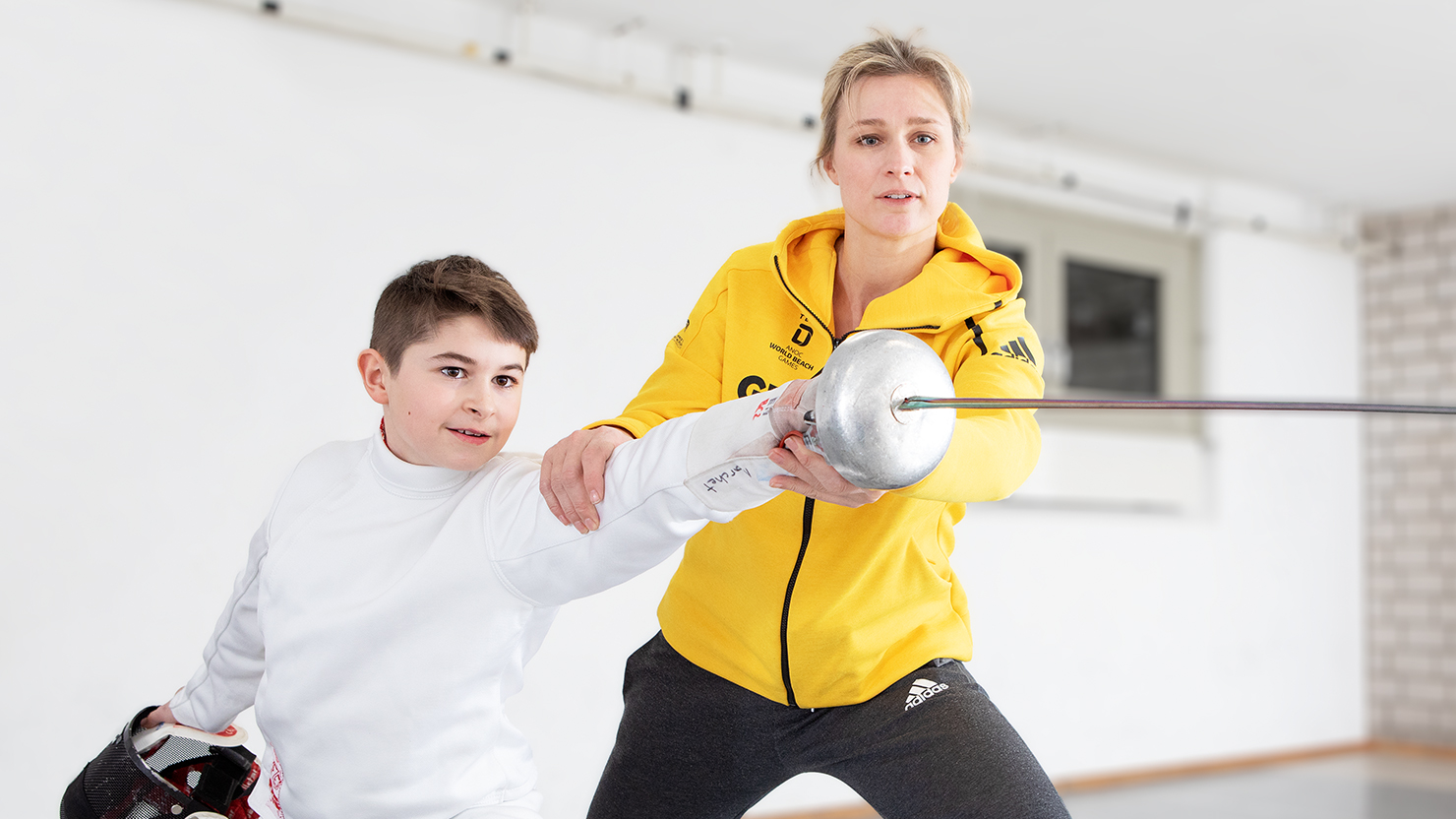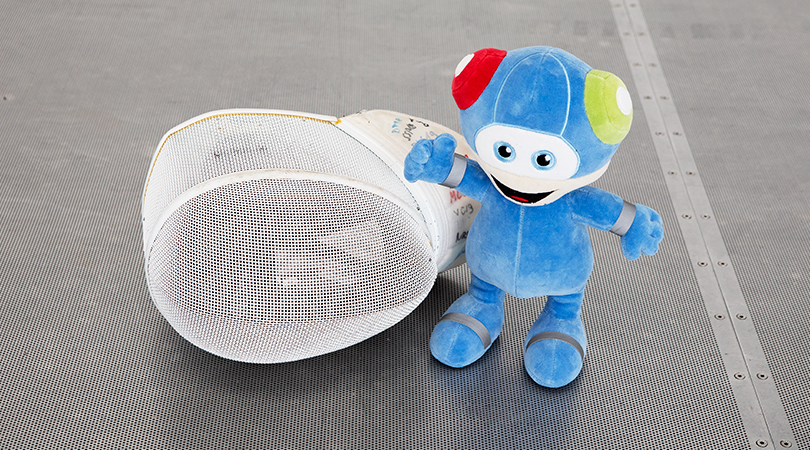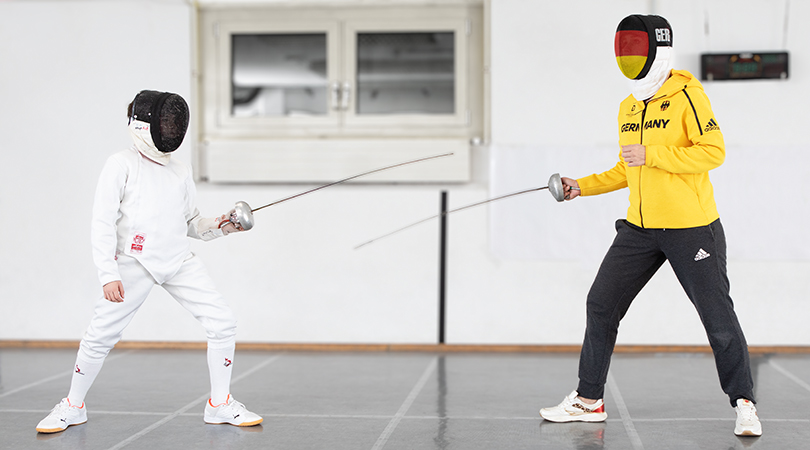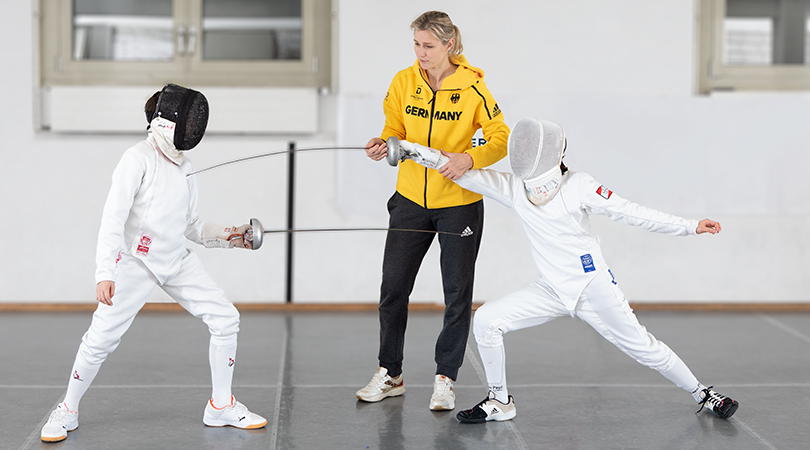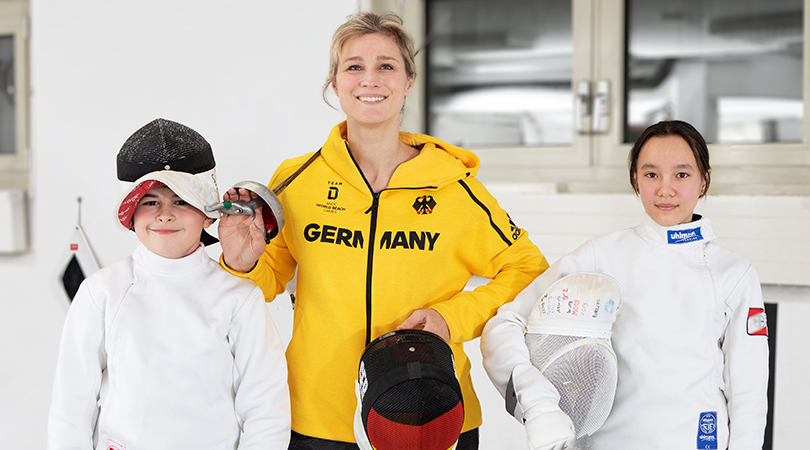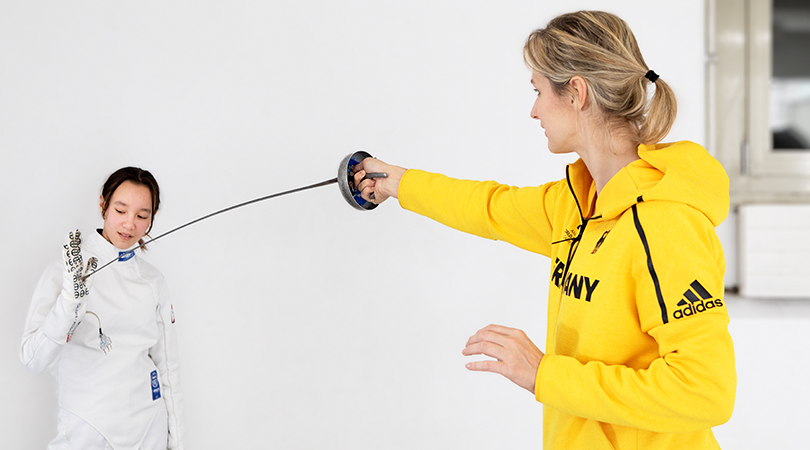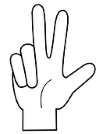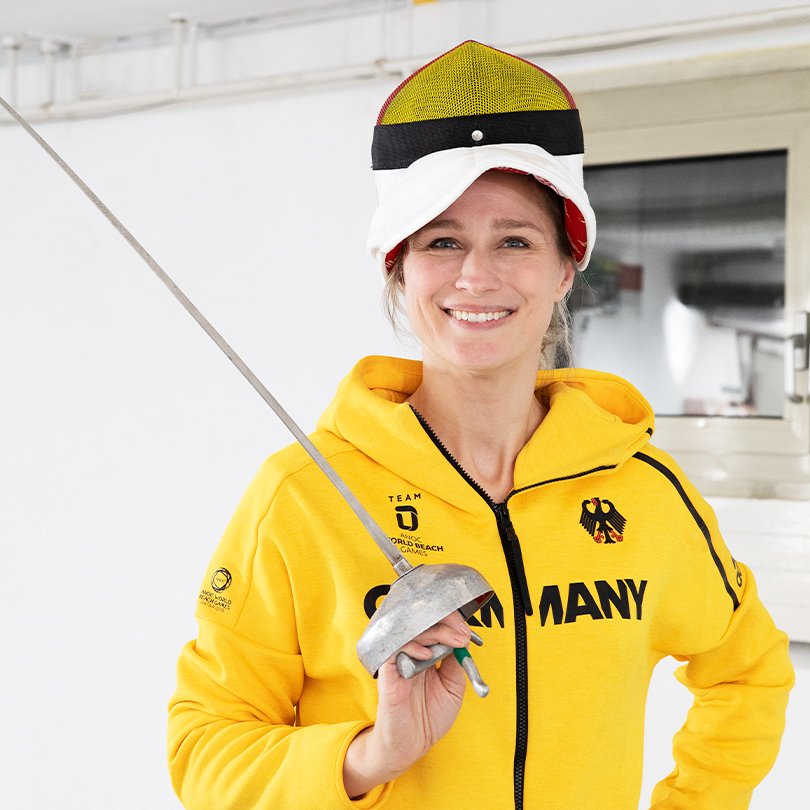The duel on the planche is quite unfair in this case. In a sport like fencing, where reach can be decisive, the eleven-year-old Bruno has no chance against the adult Britta Heidemann. Bruno still doesn't want to miss out on the short training skirmish. If you have big goals, you need challenges to grow. Bruno wants to achieve exactly what his opponent has already achieved: an Olympic victory in epee fencing. Along the way, the former competitive athlete has developed skills and competences to perfection that can also be decisive in road traffic. MobileKids therefore visited Britta Heidemann during training with the young members of her fencing club in Leverkusen.
Don't think of the big goal as soon as you start running
When Bruno tells her about his big goal, Britta has to smile. Olivia, who also attends the training, would be satisfied with winning a German championship title for now. The bar is set high in the fencing department of TSV Bayer 04 Leverkusen. This is also thanks to Britta's successes. The future Olympic champion chose a strategy for her way to the top that children can also follow on their way to school or sports training. Don't think about the big goal as soon as you start running, but think about the challenges in between first: children cycling on the pavement or the road, and the traffic lights at the next corner, for example.
The situation on the planche is now a little more balanced. Britta made room for Olivia. The programme includes the simple attack kick. Olivia makes a lunge, extends her arm forward out of the movement and hits Bruno on the upper body. That works great. Nevertheless, the Olympic champion makes small corrections and immediately sees how she can still get a few millimetres out. The straightforward direct attack without many feints is one of her favourite actions. "When you catch the perfect moment, the simplest solutions are often the best," she tells the children.
A sense of distance is important
In reality, however, this is anything but simple. Because Olivia lets her guard down on her attacking thrust and opens the door for Bruno to counter-attack. Therefore, perfect timing is required. The eleven-year-old has to recognise exactly when Bruno makes a movement that does not allow him a quick counter-reaction and at which point he exposes his hitting area in the process. Then it's forwards and push. In order for the attack to succeed, Olivia already has to keep the right distance during preparation. "I like the medium measure best," says Olivia. In sport fencing, the distance to the opponent is called the measure. In the middle one, Olivia has to do a lunge before she can hit Bruno with an arm strike. Exactly what distance she takes depends on her reach and on Bruno's reach. The right distance therefore has to be re-evaluated and adjusted from duel to duel. Similar to the way to school by bike, when children ride behind each other in a group and there is suddenly a downhill gradient or pedestrians to overtake. A sense of distance is important even on roads without pedestrian crossings or traffic lights. "When I want to cross a street, I always have to make sure that the cars are far enough away," says Bruno.
The medium measure also hides a basic tactic that is just right in road traffic. Olivia thus shows that she acts in a wait-and-see way, but not too far away from the action. Just as is required when there are cars, bicycles or trains crossing around you, to which you have to react prudently and then cross the road swiftly at the right moment.
Concentration on the essentials
As Britta and the kids train, it becomes apparent that fencing is quite similar to the stop-and-go of the traffic world. Olivia and Bruno get into the starting position, assume their measures. There follows a rapid sequence of steps, feints and parries with the epee, which can hardly be distinguished and end in an attacking thrust with a hit. Then two steps apart again to the starting position. A short pause ensues. Just like on the street, phases in which maximum concentration is required alternate with phases in which the children can let themselves rest a little, but must not be distracted at all. But there are enough disruptive factors. On the street a jingling smartphone or friends on the opposite side. During the duel, coaches, parents and spectators cheering their children on or shouting tips in during the short breaks. "If there's too much going on next to the planche, it can be annoying," says Bruno. Britta's clear advice for such cases: As long as the duel is going on, a coach or trainer is in charge outside. The young fencers should not be distracted by the rest. Concentration on the essentials is always important. Taking this to heart not only applies to sport, but is also a good tip in road traffic.
Three tips from Britta to improve reaction time and concentration:
1. The trick with the glove
In fencing training, reaction speed and concentration are often trained with an exercise that can also be done in the classroom. For this, a child takes a glove, a cap or a sock in their hand and holds it up to a wall. The second child stands sideways about one metre from the wall, for example, if a stick is used as a substitute for an epee, about one and a half metres. Then the first child drops the object and the second tries to catch it with a lunge and a pushing movement and press it against the wall. The difficulty level can be increased a little. The child who drops the target can also move it a little to the right and left - and then drop it.
2. A question of distance
For fencers, practise on the wall serves to develop a feeling for their measure and to hit accurately. Children in class can learn to estimate short distances. One child simply stands slightly crouched to the side, the second raises one hand as a hitting surface at shoulder height. If an epee substitute is used, it is better to mark a hitting area on the wall. Then the first child tries to reach the target area with a lunge and an outstretched arm or the tip of the stick. In the process, each attempt moves a little further away from the goal, so that the lunge has to become bigger and bigger - or steps may even be needed before the lunge. The distance of the last hit (front foot) is recorded and measured. Relevant dimensions from road traffic can then be drawn in on the route, for example the standard lane width of a country road (three metres) or a main road (3.5 metres). Or how about the minimum distance of one and a half metres when overtaking bicycles in built-up areas?
3. Exercise with table tennis balls
Reaction speed, concentration and perception of movements can be trained very easily with two table tennis balls. Two children face each other with outstretched arms. One holds two ping-pong balls hidden in their fists. As soon as this child drops a ball, the second one has to catch it before it touches the floor. Variation: The ball must bounce on the ground and be caught as it rises. The first child can give the ball a direction by moving it slightly so that it bounces to the side.

Britta Heidemann was born in Cologne in 1982 and was one of the best epee fencers in the world during her active time. Originally a track and field athlete and swimmer, she only came into contact with the sport at which she later excelled via modern pentathlon at the age of 12. By specialising in epee fencing in 2000, she laid the foundation for a unique success story, the climax of which she reached seven years later when she became world champion in 2007, Olympic champion in 2008 and European champion in 2009. Many more medals followed before she ended her career in 2018.
In her positions as ambassador for the German government on the topic of "Sport for Development", member of the Athletes' Commission of the International Olympic Committee (IOC) or as a member of the Board of Trustees of the Foundation of the German Football League (DFL), Heidemann advocates sustainability at major sporting events, social cohesion and values such as respect, team spirit and fair play.


